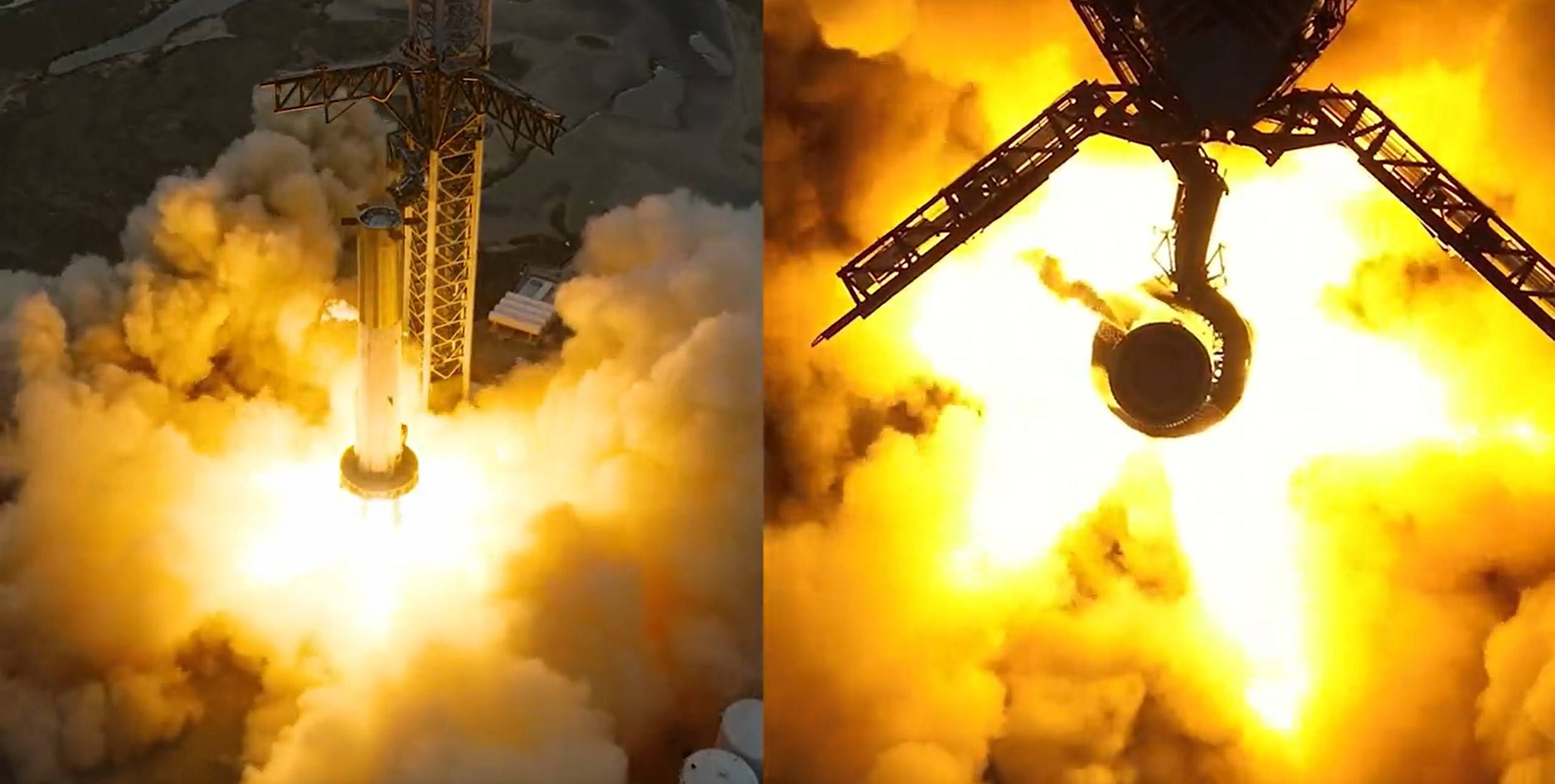
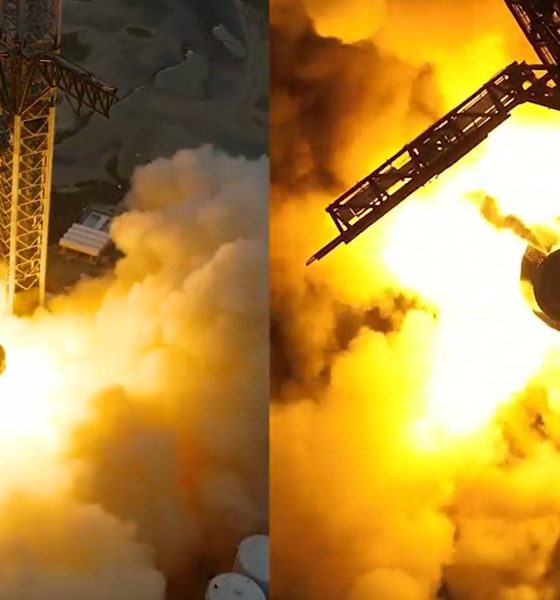
News
SpaceX Starship booster survives record-breaking 31-engine static fire
SpaceX’s Starship rocket has survived a record-breaking engine test – potentially the most powerful static fire in the history of rocketry.
According to CEO Elon Musk, Super Heavy Booster 7 (B7) ultimately ignited 31 of its 33 Raptor engines. One engine was manually disabled “just before” the static fire, while the other faulty engine automatically shut down while attempting to ignite. The other 31 Raptors, however, completed a “full duration” static fire that lasted about five seconds. Musk says that even with two engines disabled, those that remained were “still enough…to reach orbit” – an excellent result despite the static fire’s imperfections.
Most importantly, Super Heavy Booster 7 survived the test without catching fire, exploding, or popping its tanks. To partially counteract the thrust of its Raptor engines, the rocket’s tanks were filled with some 3000 tons (6.6M lbs) of liquid oxygen and methane propellant. The stool-like orbital launch mount (OLM), which also survived the test in one piece, held Starship down with 20 clamps to counteract any remaining thrust. From SpaceX’s perspective, the fact alone that its only orbital-class Starship launch site survived the ordeal is likely enough for it to consider the static fire a success. But the test was much more than that.
The update that's rolling out to the fleet makes full use of the front and rear steering travel to minimize turning circle. In this case a reduction of 1.6 feet just over the air— Wes (@wmorrill3) April 16, 2024
Incinerating rocket records
Despite losing two Raptors, SpaceX still broke the all-time record for the number of rocket engines ignited simultaneously. That record was held by the Soviet N1 rocket, which launched four times with 30 NK-15 engines in the late 1960s and early 1970s. None of its test flights were successful, but N1 still set the record for the most thrust produced by a single rocket, generating up to 4500 tons (9.9M lbf) of thrust at liftoff.
Neither SpaceX nor CEO Elon Musk has confirmed it, reducing the odds that Super Heavy Booster 7 broke that historic thrust record. But it certainly could have. Each Raptor 2 engine can generate up to 230 tons (507,000 lbf) of thrust at sea level. Raptor is theoretically designed to throttle as low as 40%, or 92 tons (~200,000 lbf) of thrust. With 33 engines operating nominally at their minimum throttle setting, Super Heavy would have produced 3036 tons (~6.7M lbf) of thrust during today’s static fire – not a record.
For 31 Raptors to break N1’s thrust record, the average throttle setting would have had to be around 64% or higher – far from unreasonable. From a data-gathering perspective, a full-thrust static fire would be the most valuable 33-engine test SpaceX could attempt, but it would also be the riskiest and most stressful for the rocket and pad.
Former SpaceX executive Tom Mueller says that SpaceX broke N1’s record. Mueller is effectively the father of the Raptor engine, and likely still gets information straight from SpaceX engineers he used to work with. Still, one would expect SpaceX itself to proudly confirm as much if a rocket it built became the most powerful in history.
The most powerful rocket test in history?
Whether or not Starship became the most powerful rocket in history, it has likely become the most powerful rocket ever tested on the ground. The first stage of Saturn V produced around 3400 tons (7.5M lbf) of thrust during its first sea-level static fire in 1965. Likely contributing to its failure, N1’s booster was never static-fired. Other powerful rockets like the Space Shuttle and SLS use or used a combination of solid rocket boosters and liquid engines that cannot be tested together on the ground.
Unless SpaceX’s goal was a minimum-throttle static fire, Starship’s 31-Raptor static fire likely beat Saturn V’s record to become the most powerful ground test in the history of rocketry.
SpaceX’s next steps
While the 31 that did ignite appeared to perform about as well as SpaceX could have hoped, the two engines missing from February 9th’s historic Starship static fire have probably complicated the company’s next steps. To be fully confident in Starship’s ability to launch and fly a safe distance away from the launch site, SpaceX would likely need to complete a full 33-engine test. Meanwhile, Starship can’t fly until the Federal Aviation Administration approves a launch license, and the FAA could be stodgy enough to deny SpaceX a license without a perfect 33-engine static fire.
Alternatively, the FAA may accept that Starship could still safely launch and reach orbit while missing several Raptors. SpaceX could also guarantee that it will only allow Starship to lift off if all 33 engines are active, in which case a second 33-engine static fire attempt may not be necessary.
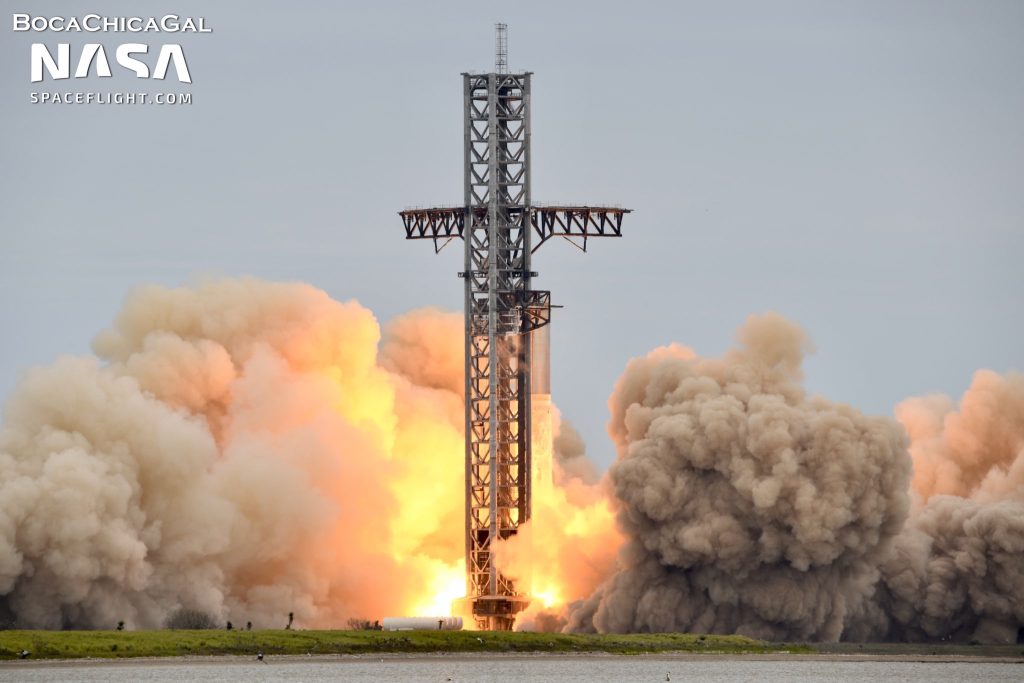
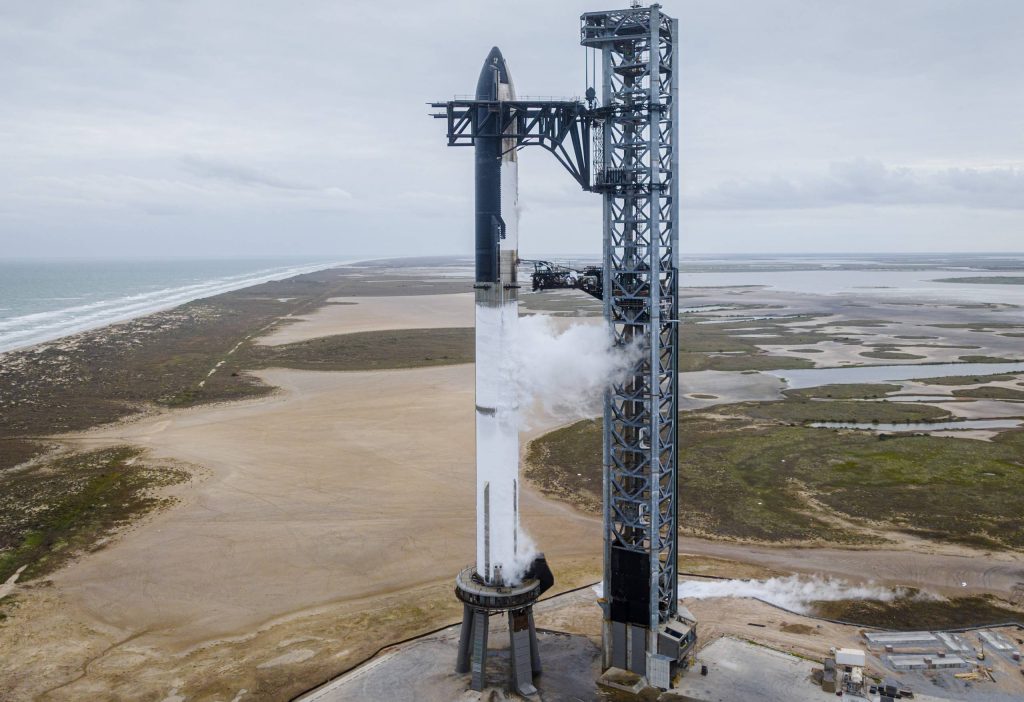
If SpaceX is happy with Booster 7’s 31-engine test results and isn’t too put off by any pad damage the test may or may not have caused, it will likely focus on finishing Starship 24. Ship 24 will then be transported back to the pad and reinstalled on top of Booster 7. SpaceX may choose to conduct another wet dress rehearsal or a static fire with the fully-stacked Starship, but it may also deem additional testing unnecessary.
Once all those tasks are completed, Ship 24 and Booster 7 will be ready to support Starship’s first orbital launch attempt. Prior to February 9th’s static fire, SpaceX CEO Elon Musk and COO/President Gwynne Shotwell agreed that Starship’s orbital launch debut could happen as early as March 2023. After today’s test, a March 2023 launch may be within reach.
Rewatch Super Heavy Booster 7’s historic static fire below.

News
Tesla 2025 Holiday Update: Here’s what it includes, and what it’s missing
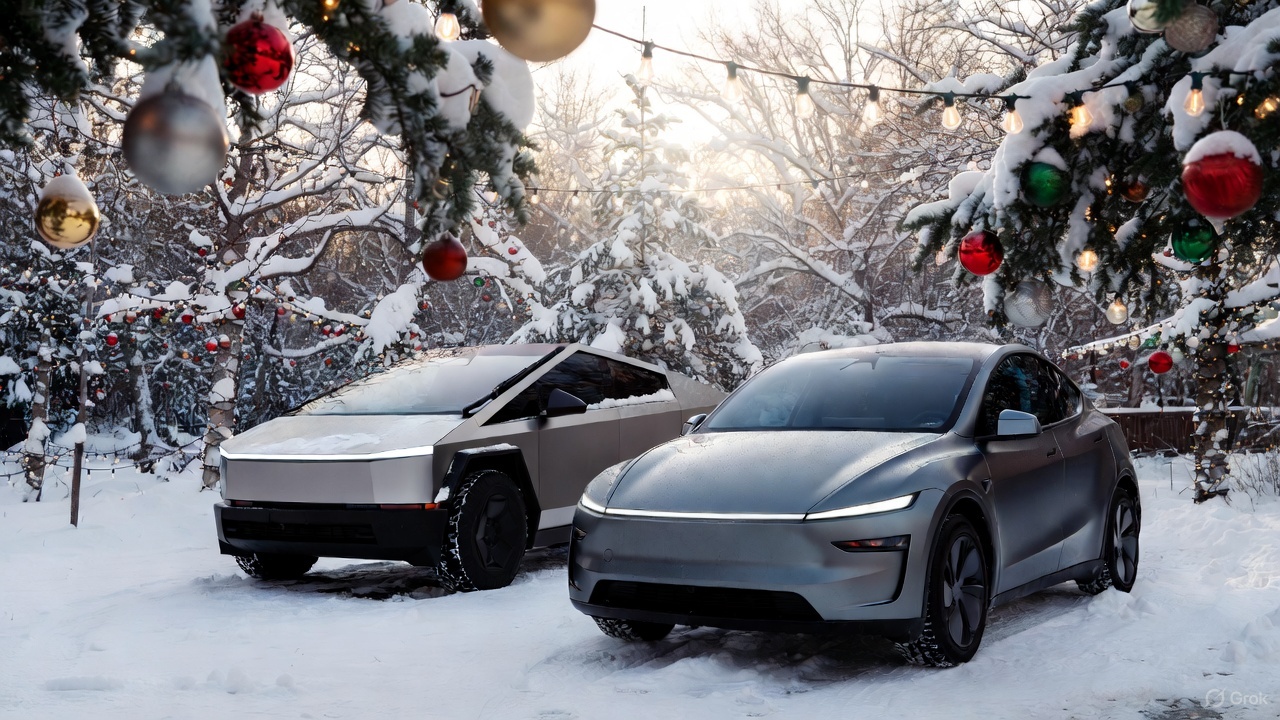
Tesla has finally announced the features for the 2025 Holiday Update, which includes a wide variety of new inclusions that are both functional and just for fun.
The new features are plentiful, but there were a handful of things we were expecting to see based on what we know. We don’t want to sound ungrateful, because there are a lot of great new things on the way with this update.
Here’s what was included:
Grok with Navigation Commands (Beta)
Grok will now have the ability to add and edit navigation destinations, which is a drastic improvement considering Tesla owners had to use their standard voice commands for this in the past.

The utilization of Grok will likely improve the navigation experience by offering some insight into your destination, including reviews and other points of interest nearby.
It will be enabled by using Grok’s “Assistant” personality.
Tesla Photobooth
“Turn your car into a photobooth! Take selfies from inside your Tesla & give yourself a makeover with fun filters, stickers, and emojis. Share with others right from the Tesla app.”
This feature will be available within the Toybox.
Dog Mode Live Activity
When using Dog Mode to keep your four-legged friend comfortable in the car, you’ll now be able to check in on them as it will share periodic snapshots of the cabin, along with live updates on temperature, battery, and climate conditions.
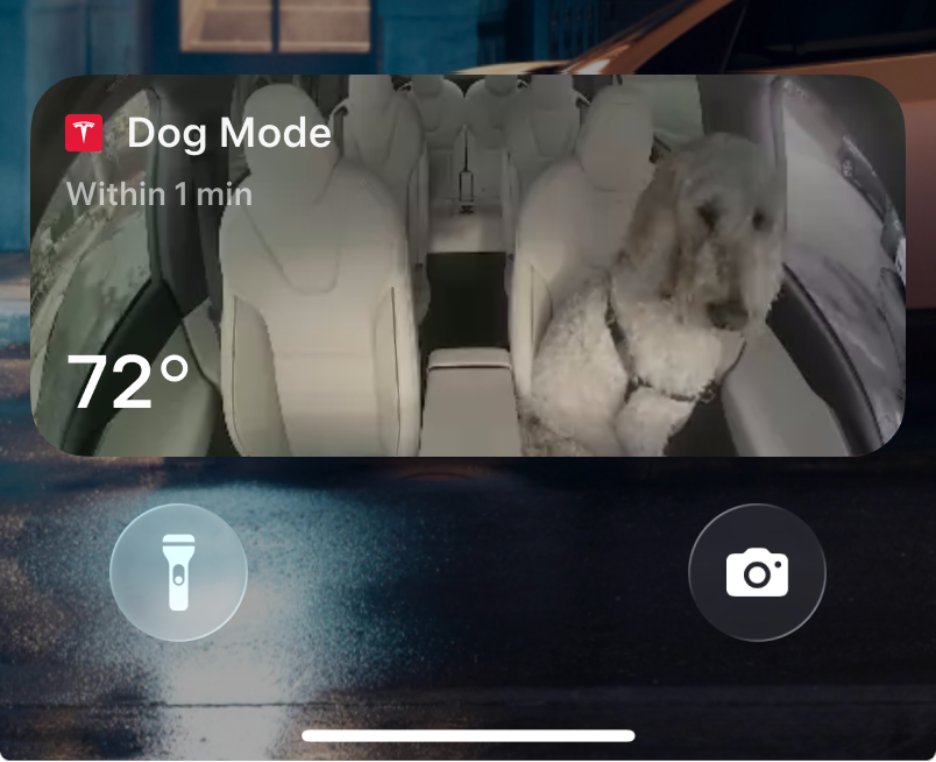
Dashcam Viewer Update
Dashcam clips are awesome, but they’re void of a lot of information, which could be useful in some instances, especially if there is an accident.
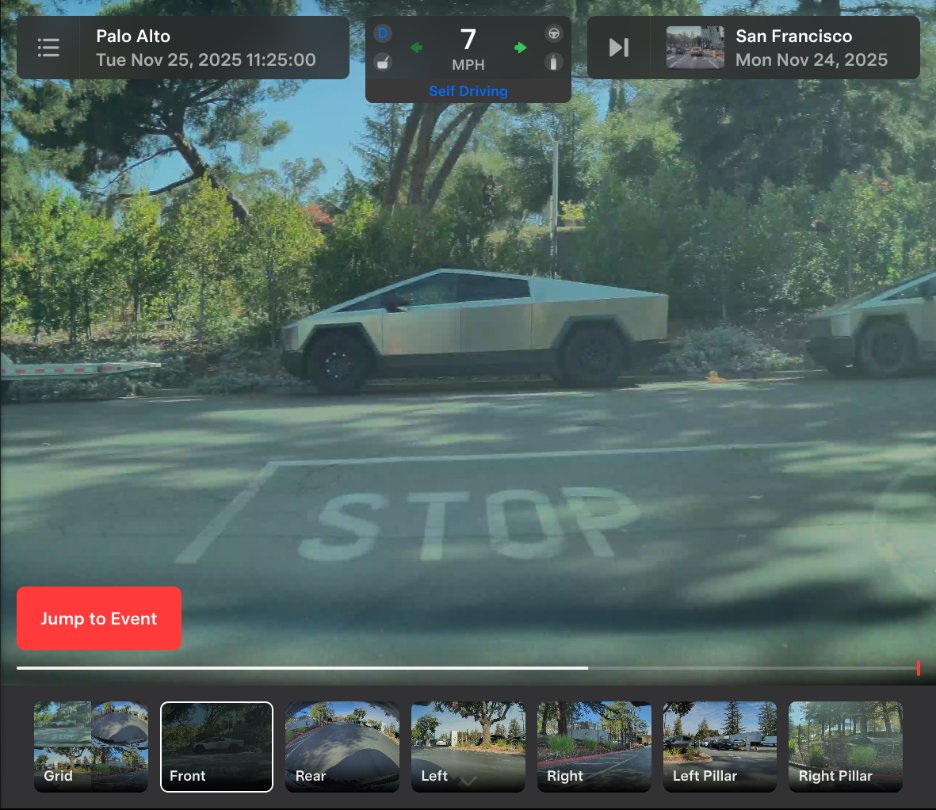
Now, there will be additional details included on each Dashcam clip, like speed, steering wheel angle, and Self-Driving state.
Santa Mode
New graphics, trees, and a lock chime are now available.
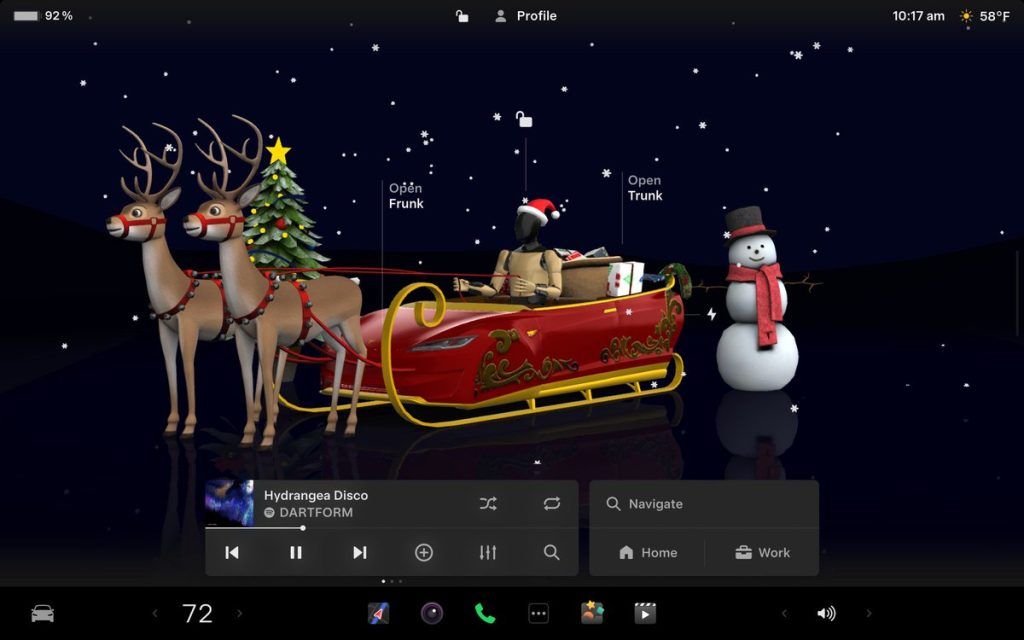
Light Show Update
A new Light Show, called Jingle Rush, will be available.
Custom Wraps and License Plates in Colorizer
Colorizer will now be known as “Paint Shop” in the Toybox. You will now be able to personalize your Tesla Avatar with window tints, custom wraps, and license plates. Preloaded designs will be available, but owners will be able to use their USB Flash Drives to create one that suits their style.
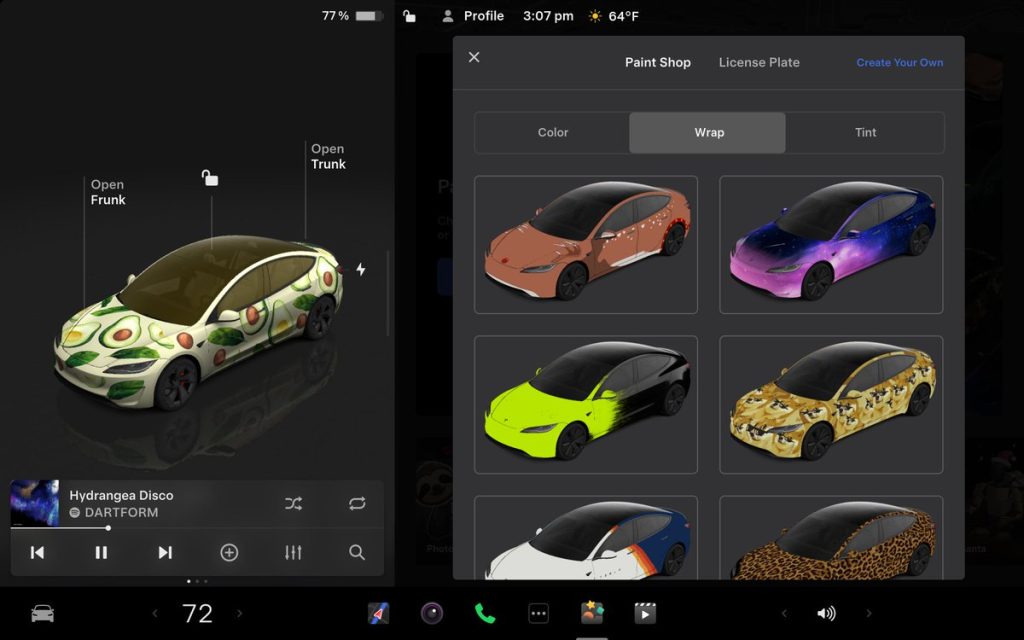
Navigation Improvements
Changing the order of your destinations will be easier through a new “Favorites” tab, and Home and Work can now be set by dropping a pin.
There will also be “Suggested Destinations,” which will be determined through recent trips and habits while parked.
Supercharger Site Map
Perhaps the most significant feature of the Holiday Update, Tesla is adding a 3D view of select Tesla Superchargers by tapping “View Site Map.”
When navigating to a location with this capability, the site layout, live occupancy, and nearby amenities will be available. Drivers will also be able to choose which stall to Supercharge.
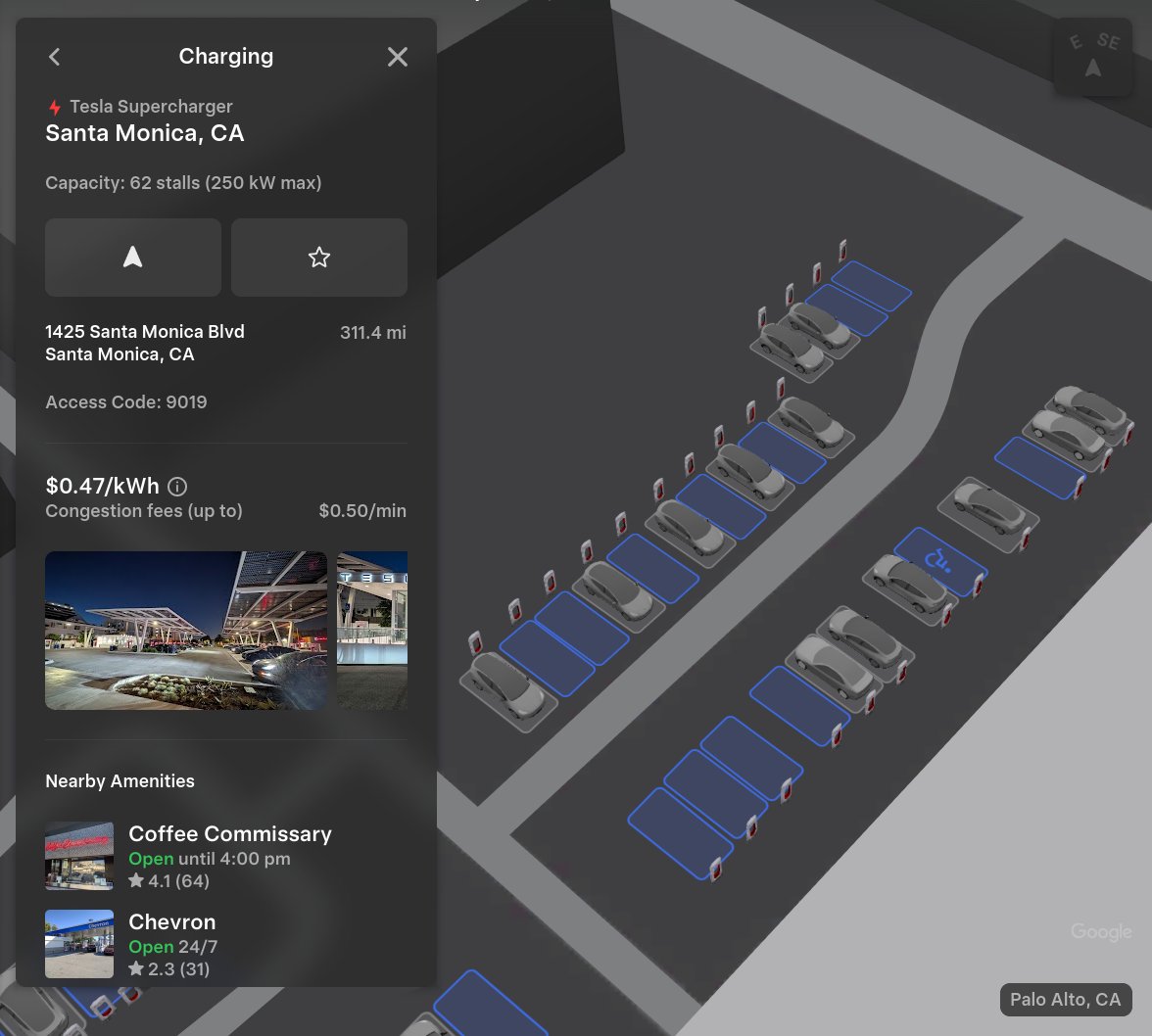
This is only available at a handful of locations currently, but it will expand to more Superchargers as it becomes more robust.
Automatic Carpool Lane Routing
Navigation will include an option to utilize carpool lanes. Your route will automatically choose the carpool lane when eligible.
Phone Left Behind Chime
If the in-car occupant detection system does not see anyone in the car and there is a phone key, or if a phone is left inside the cabin, your Tesla will chime a few seconds after the doors close.
Charge Limit Per Location
You can now save a charge limit for the current location while parked and it will be applied automatically the next time you charge there.
ISS Docking Simulator
In a SpaceX collaboration, Tesla has added this game to its in-car Arcade:
“Become an astronaut and prove your skills by docking with the International Space Station. Control & guide the rocket in this 3D docking simulator game using a set of controls based on actual interfaces used by NASA astronauts.”
Additional Improvements
-
Enable or disable wireless phone charging pads in Controls > Charging (S3XY) or Controls > Outlets & Mods (Cybertruck)
-
Add Spotify tracks to your queue right from the search screen & scroll through large Spotify playlists, albums, podcasts, audiobooks & your library seamlessly, without paging
-
Take the vibes up another level with rainbow colors during Rave Cave. Accent lights color will change along with the beats of your music. App Launcher > Toybox > Light Sync
-
Lock Sound now includes Light Cycle from Tron Mode. Toybox > Boombox > Lock Sound
What’s Missing
There are a handful of features we expected to see with the Holiday Update, but were not included.
Banish Feature
Tesla has been teasing the Banish functionality for quite a few years, but evidently, it is not quite there yet.
Banish will allow owners to get out of their vehicle at the entrance of their destination, and the car will go find a spot and park itself. Some refer to it as “Reverse Summon.”
Apple CarPlay
With all of the rumors regarding Apple CarPlay and then the evidence that Tesla was working to bring CarPlay to vehicles, we really expected it to come with the Holiday Update.
We’re not upset it’s not here, though. Tesla’s in-car UI is significantly better, at least in our opinion.
Parking Spot Selection
One of the biggest gripes about the new Arrival Features with Full Self-Driving v14 is that choosing a set parking spot is not available. This is especially frustrating for Tesla owners who rent or live in townhouse neighborhoods or apartment complexes with assigned parking.
Tesla seems to be working on this based on the release notes for v14.2, where it said future capabilities would include Parking Spot Selection.
News
Man credits Grok AI with saving his life after ER missed near-ruptured appendix
The AI flagged some of the man’s symptoms and urged him to return to the ER immediately and demand a CT scan.

A 49-year-old man has stated that xAI’s Grok ended up saving his life when the large language model identified a near-ruptured appendix that his first ER visit dismissed as acid reflux.
After being sent home from the ER, the man asked Grok to analyze his symptoms. The AI flagged some of the man’s symptoms and urged him to return immediately and demand a CT scan. The scan confirmed that something far worse than acid reflux was indeed going on.
Grok spotted what a doctor missed
In a post on Reddit, u/Tykjen noted that for 24 hours straight, he had a constant “razor-blade-level” abdominal pain that forced him into a fetal position. He had no fever or visible signs. He went to the ER, where a doctor pressed his soft belly, prescribed acid blockers, and sent him home.
The acid blockers didn’t work, and the man’s pain remained intense. He then decided to open a year-long chat he had with Grok and listed every detail that he was experiencing. The AI responded quickly. “Grok immediately flagged perforated ulcer or atypical appendicitis, told me the exact red-flag pattern I was describing, and basically said “go back right now and ask for a CT,” the man wrote in his post.
He copied Grok’s reasoning, returned to the ER, and insisted on the scan. The CT scan ultimately showed an inflamed appendix on the verge of rupture. Six hours later, the appendix was out. The man said the pain has completely vanished, and he woke up laughing under anesthesia. He was discharged the next day.
How a late-night conversation with Grok got me to demand the CT scan that saved my life from a ruptured appendix (December 2025)
byu/Tykjen ingrok
AI doctors could very well be welcomed
In the replies to his Reddit post, u/Tykjen further explained that he specifically avoided telling doctors that Grok, an AI, suggested he get a CT scan. “I did not tell them on the second visit that Grok recommended the CT scan. I had to lie. I told them my sister who’s a nurse told me to ask for the scan,” the man wrote.
One commenter noted that the use of AI in medicine will likely be welcomed, stating that “If AI could take doctors’ jobs one day, I will be happy. Doctors just don’t care anymore. It’s all a paycheck.” The Redditor replied with, “Sadly yes. That is what it felt like after the first visit. And the following night could have been my last.”
Elon Musk has been very optimistic about the potential of robots like Tesla Optimus in the medical field. Provided that they are able to achieve human-level articulation in their hands, and Tesla is able to bring down their cost through mass manufacturing, the era of AI-powered medical care could very well be closer than expected.
News
Tesla expands Model 3 lineup in Europe with most affordable variant yet
The Model 3 Standard still delivers more than 300 miles of range, potentially making it an attractive option for budget-conscious buyers.

Tesla has introduced a lower-priced Model 3 variant in Europe, expanding the lineup just two months after the vehicle’s U.S. debut. The Model 3 Standard still delivers more than 300 miles (480 km) of range, potentially making it an attractive option for budget-conscious buyers.
Tesla’s pricing strategy
The Model 3 Standard arrives as Tesla contends with declining registrations in several countries across Europe, where sales have not fully offset shifting consumer preferences. Many buyers have turned to options such as Volkswagen’s ID.3 and BYD’s Atto 3, both of which have benefited from aggressive pricing.
By removing select premium finishes and features, Tesla positioned the new Model 3 Standard as an “ultra-low cost of ownership” option of its all-electric sedan. Pricing comes in at €37,970 in Germany, NOK 330,056 in Norway, and SEK 449,990 in Sweden, depending on market. This places the Model 3 Standard well below the “premium” Model 3 trim, which starts at €45,970 in Germany.
Deliveries for the Standard model are expected to begin in the first quarter of 2026, giving Tesla an entry-level foothold in a segment that’s increasingly defined by sub-€40,000 offerings.
Tesla’s affordable vehicle push
The low-cost Model 3 follows October’s launch of a similarly positioned Model Y variant, signaling a broader shift in Tesla’s product strategy. While CEO Elon Musk has moved the company toward AI-driven initiatives such as robotaxis and humanoid robots, lower-priced vehicles remain necessary to support the company’s revenue in the near term.
Reports have indicated that Tesla previously abandoned plans for an all-new $25,000 EV, with the company opting to create cheaper versions of existing platforms instead. Analysts have flagged possible cannibalization of higher-margin models, but the move aims to counter an influx of aggressively priced entrants from China and Europe, many of which sell below $30,000. With the new Model 3 Standard, Tesla is reinforcing its volume strategy in Europe’s increasingly competitive EV landscape.








